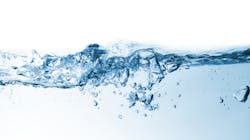EPA takes three new actions to address PFAS
The U.S. Environmental Protection Agency (EPA) has announced three actions to protect communities and the environment from per- and polyfluoroalkyl substances (PFAS) in waters.
“EPA is using all available tools to address PFAS contamination as part of a broader, whole-of-government effort to protect communities across the country from these chemicals,” said EPA Administrator Michael S. Regan. “Today’s actions help protect the health of all Americans as we deliver on our commitment to research, restrict, and remediate PFAS.”
A New Testing Method
EPA is publishing a new method that can broadly screen for the presence of PFAS in water at the part per billion level. EPA’s new Draft Method 1621, the Screening Method for the Determination of Adsorbable Organic Fluorine (AOF) in Aqueous Matrices by Combustion Ion Chromatography (CIC), provides an aggregate measurement of chemical substances that contain carbon-fluorine bonds. PFAS are a common source of organofluorines in wastewater.
This new method is especially useful for understanding the presence and forms of PFAS in wastewater when used in conjunction with methods that target individual PFAS. EPA’s Draft Method 1621 has successfully completed single laboratory validation. Multi-laboratory validation will take place this summer and EPA intends to publish an updated version of the method later this year.
New Discharge Permitting Direction
The National Pollutant Discharge Elimination System (NPDES) program interfaces with many pathways by which PFAS travel and are released into the environment and ultimately impact people and water quality. EPA is seeking to proactively use existing NPDES authorities to reduce discharges of PFAS at the source and obtain more comprehensive information through monitoring on sources of PFAS.
As part of its announcement, EPA issued a memo titled “Addressing PFAS Discharges in EPA-Issued NPDES Permits and Expectations Where EPA is the Pretreatment Control Authority.” This memo provides instructions for monitoring provisions, analytical methods, the use of pollution prevention, and best management practices to address discharges of PFAS.
EPA says that these provisions will help reduce PFAS pollution in surface water as the agency aggressively embarks to promulgate effluent guidelines, multi-validated analytical methods, and water quality criteria recommendations that address PFAS compounds. EPA also plans to issue new guidance to state permitting authorities to address PFAS in NPDES permits in a future action.
Protective Levels for Aquatic Life
EPA is also developing national recommended ambient water quality criteria for PFAS to protect aquatic life. The agency is proposing the first Clean Water Act aquatic life criteria for perfluorooctanoic acid (PFOA) and perfluorooctane sulfonic acid (PFOS)—two of the most well-studied chemicals in this group. The criteria are intended to protect aquatic life in the United States from short-term and long-term toxic effects of PFOA and PFOS.
Following a comment period, EPA intends to issue final PFOA and PFOS recommended criteria, considering public comments and any new toxicity data. States and Tribes may consider adopting the final criteria into their water quality standards or can adopt other scientifically defensible criteria that are based on local or site-specific conditions.




